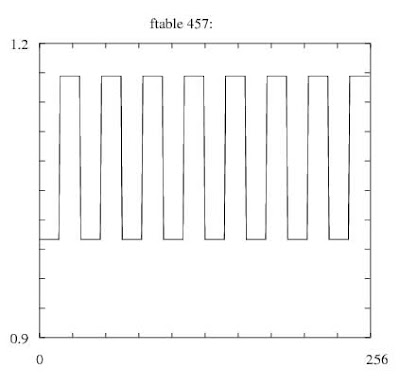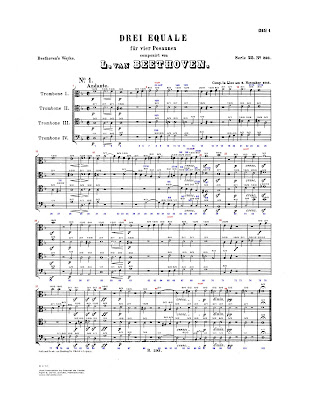I fixed up a few erroneous sustain timings and created a few more versions. This one is take #8, and has a nice busy opening with a Conlon Nancarrow feel to it. That is, it would if Nancarrow had better access to a slide player piano with a whammy bar. The intonation is in 72 equal divisions of the octave. As before, we go through the melody seven times with different levels of variation each time. There are lots of slides from the 7:9:11 to 4:5:6, at various speeds, including slides with pitch vibrato.
I take advantage of some new envelopes I created to enable longer sustain, and even crescendos of piano notes. For example, the normal piano sound has a characteristic waveform that starts loud and gets quickly softer. Here is the waveform of a grand piano played fortissimo on a G at the bottom of the bass clef:
And here is an envlope that will attempt to smooth it out:

And the result, when Csound is told to modify the sample by the chosen envelope:

The result is a note that not only has some serious sustain, but in many cases it will actually crescendo as it sits on the note for a while. The effect is much like that of an electric guitar player using the combination of sustain and feedback to allow a note to grow as it’s held.
There are many other possible envelopes that are applied at different times, resulting in sharp attacks and soft ones, depending on the choices available to each note in the piece.
Play it here: or download this linkSubscribe here: 




.jpg)